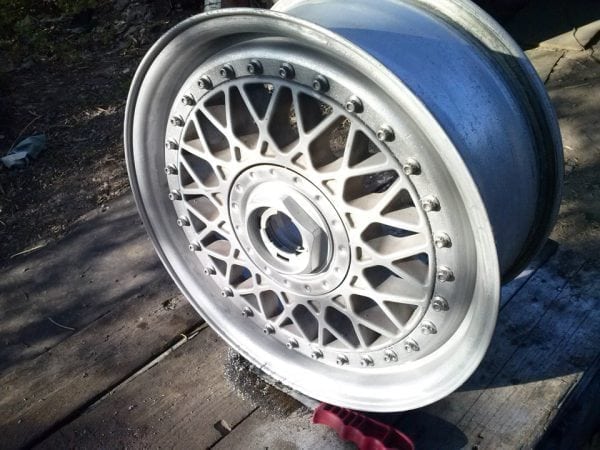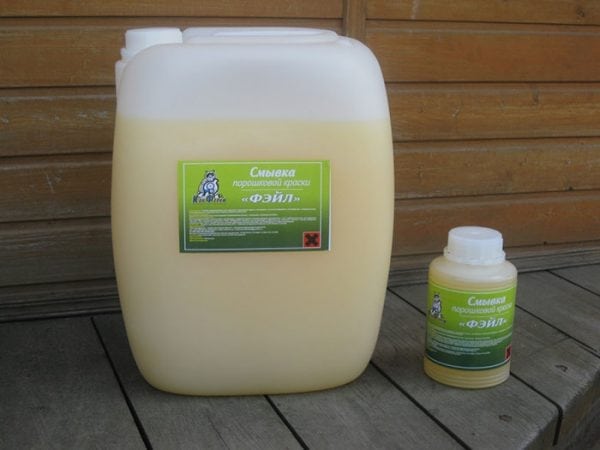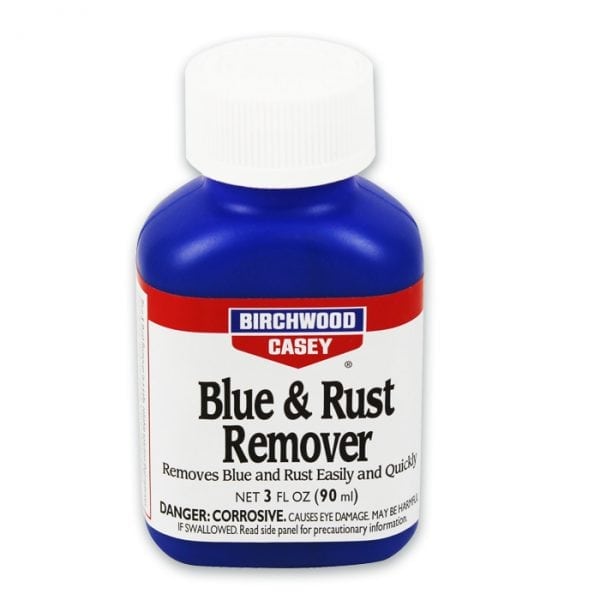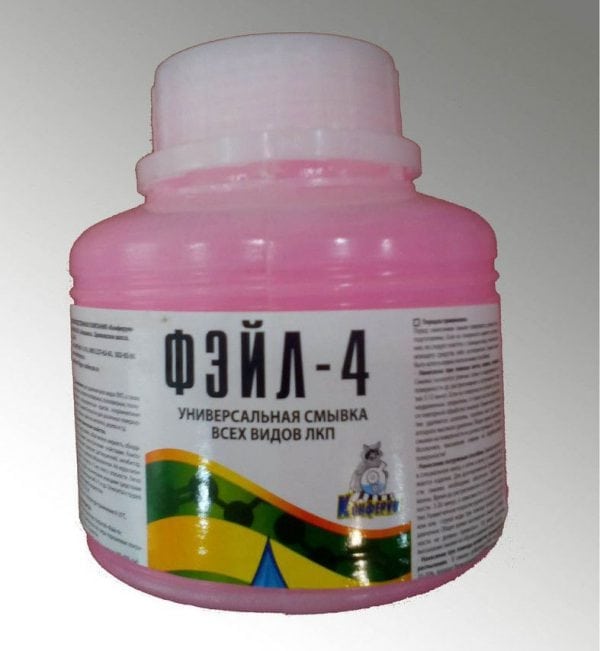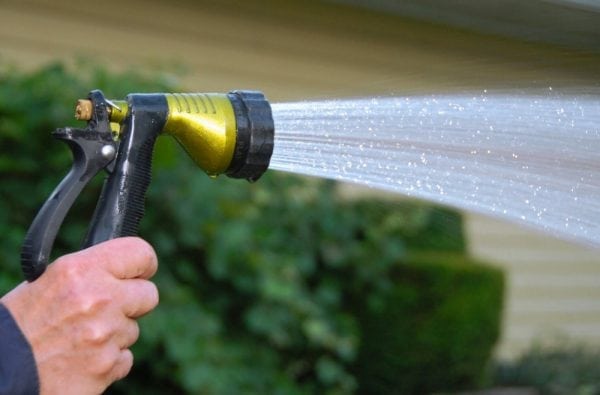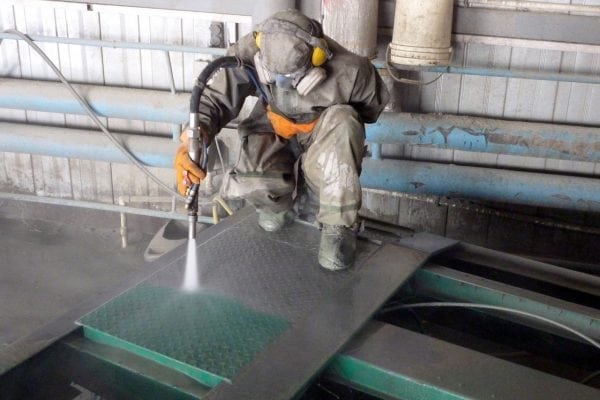Washing off powder paint is not an easy task and requires considerable effort. Mechanical cleaning with an improvised tool will not help here. The reason for the difficulties in the strength of this type of paintwork. Chemicals, sandblasting and shot blasting methods, as well as material burning, are used to remove paint. Below we dwell on these methods in more detail.
- Chemicals
- Examples of washing compositions
- Remover "Remover"
- Means for removal of paint "Feil-4"
- Water jet method
- Sandblasting method
- Burning
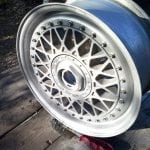
Chemicals
Removing powder paint can be done with a wash solution. Rinse is a chemically active substance that softens the paint layer, after which it is removed with a conventional metal spatula.
Despite the fact that the use of chemicals is the simplest method of removing paint, this solution has several disadvantages. First of all, it is easiest to wash off a relatively fresh coating, but if the surface is painted 2-3 years ago, removing the paint will not be easy. In addition, chemicals are highly toxic. For example, poisonous methylene chloride is a common component of washes.
The work is performed in the following order:
- To protect your eyes and skin from chemicals, wear rubber gloves and safety glasses.
- Dip the product in a container with a wash.
- Within 15-20 minutes, we expect the swelling of the paint. Stir the solution periodically.
- When the paint begins to exfoliate, we take out the product, clean the remaining coating with a scraper or spatula.
- Put the item for several minutes in a solution of sodium phosphate. In the absence of sodium, you can rinse the product in a container with plain water. It should be noted that with water it will not be possible to completely remove traces of methylene chloride, therefore, after washing, the cleaned object must be subjected to heating.
to contents ↑Note! The effectiveness of chemical flushing is significantly reduced at low air temperatures, so in such cases, the fluid must be heated.
Examples of washing compositions
Remover "Remover"
Remover of powder paint of the Remover trademark is an effective, reusable product designed for removing epoxy, polyester and epoxy-polyester coatings. It is possible to process not only steel, but also aluminum. "Remover" is a ready-to-use preparation. The table below shows the parameters corresponding to this chemical preparation.
| Kind of paint | The period of retention of the product in the bath at a temperature of the drug from 20 to 30 degrees above zero | The period of retention of the product in the bath at a temperature of the drug from 30 to 40 degrees above zero | The period of retention of the product in the bath at a temperature of the drug from 40 to 60 degrees above zero |
|---|---|---|---|
| Epoxy, epoxy polyester | 20-40 minutes | 15-20 minutes | 7-10 minutes |
| Polyester | from one and a half hours to a day | 2-3 hours | 1 hour |
Note! Chemicals of this type can only be heated with a ventilation system.
Tips for using Remover:
- We fill the container with water so that the liquid is 1-2 centimeters higher than the level of the immersed part. This is an important point, since carbon dioxide, which is part of the air, adversely affects the stability of the bath.
- The preferred material for the bath is steel (best stainless steel).It is strongly not recommended to use zinc, galvanized or aluminum containers.
- The product must be dry before dipping.
- Due to periodic bubbling (the process of pumping air through water), the removal of the paint layer can be intensified.
- When the coating begins to peel off, it can be removed from the container and left in the air to drain the remnants of the wash. In this case, the product must be positioned so that the liquid leaves all cavities and depressions.
- If some fragments do not separate, you can repeat the wash, but this time increase the temperature and (or) the time the part was in the bath.
- After removing the remnants of the wash from the bathtub and draining, the product is washed in water.
- Water should not be allowed to enter the wash solution, since in this case the solution will become unsuitable for use.
- To replenish the tank, a fresh solution is used as an activator. Filling the bath is carried out only after removal of the sludge.
- Waste paint from the bathroom should be removed using a filter, separator or membrane-type filter press. These measures will extend the life of the wash solution.
Means for removal of paint "Feil-4"
This tool is used to remove all types of powder formulations, including epoxy, polyurethane, polyester, epoxy-polyester and vinyl chloride. Both steel surfaces and non-ferrous metal products can be cleaned. Cleaning of gypsum, concrete, stone and wooden surfaces is possible.
The main parameters of "Feil-4":
- The washing composition is a thick liquid with significant thixotropic characteristics.
- The drug includes a solvent, an inhibitory substance, a thickener and complex converters.
- Flushing does not apply to corrosive substances.
- The hazard class is the third.
- Liquid is not flammable.
- The wash preparation is removed from the treated material with water, technical cleaning agents or a solvent.
- Consumption - from 120 to 250 grams per square meter of surface.
- Recommended use temperature can range between 8-25 degrees above zero.
Before applying the composition, the surface must be prepared. Preparatory work is to clean the treated coating from contamination with water or technical detergents.
Washing can be applied in several ways:
- By brush, roller, bulk or spray.
- Immersion. If this method is chosen, you will need a container of the appropriate size, where the part must be kept for several minutes. The maximum time that can be devoted to dipping an object is 2.5 hours.
Advantages of the drug:
- It is possible to remove all types of powder paints, which favorably distinguishes "Feil-4" from competitors.
- Low flushing rate. In competing formulations, consumption ranges from 300-600 grams per square meter, while in “Fail-4” this figure does not exceed 250 grams.
- The exposure time is from 3 to 15 minutes, and for analogues it can reach up to several hours.
- Good thixotropic qualities. By thixotropy is meant the ability of the wash to linger on vertically located surfaces.
- The wash can be diluted, if necessary, with isopropyl alcohol. Proportions: 1-2 parts of alcohol for 8-9 parts of a washing preparation.
- Water makes the wash more viscous, but its effectiveness is greatly reduced.
- It remains active at low temperatures, without losing its qualities when defrosting.
Application Instructions in various ways:
- Application with a brush, roller or pouring method. We apply the washing composition in a uniform layer on the surface to be cleaned and wait for 3-15 minutes until the coating begins to swell and crack. Remove paint residues with a spatula or scraper. If surface areas that are not mechanically removable remain on the surface, again we put the part in the washing composition. Do not forget that the total residence time of an object in a chemical solution should not exceed 2.5 hours.
- Immersion application.The composition is poured into a container, where the processed item is then placed. The average time required for the appearance of cracks on the coating is from 3 to 20 minutes.
Water jet method
This method is easy to use and harmless to the material being processed. During cleaning, the coating is exposed to a powerful jet of water, in which there is glass chips acting as an abrasive. In this case, the water should be cold in order to make the coating as fragile as possible.
Stages of the work:
- We put on goggles. If possible, use ear plugs.
- We direct the nozzle to the item being cleaned.
- We turn on the equipment and process the product until the paint is peeled off.
- We wash the surface with water and treat with a rust inhibitor.
Sandblasting method
This technique involves peeling paint by directing a powerful jet of water with abrasive material — sand — onto the coating. Moreover, not only particles of the coloring matter will exfoliate, but also rust. The method is quite time-consuming, since only 10-12 square centimeters of coating can be processed qualitatively in a minute.
The main disadvantage of the sandblasting method is the high cost of the equipment. In addition, to work with such a device will require a certain skill and experience. It should also be noted that a powerful jet with a sand abrasive can damage parts that are too thin or brittle.
to contents ↑Burning
Powder paint can also be removed thermally. This is the most effective method of removing the coating, however, far from the most sparing in relation to the material. For example, you should not use burning in relation to cast iron or plastic surfaces. In the first case, the material will crack; in the second, it will melt. It should also be noted that during heating, toxins hazardous to human health are released from some materials. For burning, a blowtorch or an oxygen-acetylene torch is usually used.
When choosing a method of cleaning from powder paint, one should take into account the characteristics of the base material, its shape and dimensions, the presence of a tool. The easiest way is chemical cleaning. If surface characteristics allow, a sandblasting technique can also be used. Burning is used as a last resort, if other options have not yielded results.

